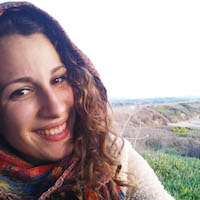More about Philip Guston
- All
- Info
- Shop

Contributor
While his paintings may look like cartoons, Guston’s life and work are a far cry from the jovial images you find in your Sunday paper.
Guston paintings can be a bit dismal from time to time, but his existential nature starts to make sense once you understand the type of upbringing this poor lad had. Guston was born in Montreal shortly after his Ukrainian Jewish parents escaped persecution in their homeland. Perhaps not fully adapted to the overly happy people of Canada, the Gustons decided to pack up and head for Los Angeles, probably figuring some sunshine would do them good.
Nope. See, KKK activities were still rampant across LA at the time and, being the Jewish foreigners they were, this was not the paradise they were hoping for. Shortly after the move, Guston’s father hung himself in their shed due to the pressures of persecution and difficulty finding work. And as we all know, when things can get worse, they often do. Poor little Philip Guston was the one who found his father's dead body hanging from the rafters. I would say the combo of dealing with the KKK and finding your dead dad in the shed earns you the right to make melancholy art the rest of your life.
Sadly, the bad family luck didn't end there though. Years later, Guston’s brother was run over by his parked car when the brake failed. He ended up having both his legs amputated and died shortly after. This may explain Guston's obsession with dismembered body parts.
Guston was also long time pals with our boy Jackson Pollock. They met in high school where they quickly bonded over their love of modern art and disdain of sports. These two actually published a paper bashing their high school for valuing sports over art and got themselves expelled over it! Our heroes! Later in life they were roomies together in the Big Apple.
Guston wasn't much for self-preservation, if you couldn’t have guessed. He relied heavily on a concoction of booze, cigarettes, and french fries to get him through the day -- the ultimate breakfast of champions. It probably doesn't come as a surprise, then, that he died of a heart attack at 66.
Sources
Featured Content
Here is what Wikipedia says about Philip Guston
Philip Guston (born Phillip Goldstein, June 27, 1913 – June 7, 1980) was a Canadian American painter, printmaker, muralist and draftsman. "Guston worked in a number of artistic modes, from Renaissance-inspired figuration to formally accomplished abstraction," and is now regarded as one of the "most important, powerful, and influential American painters of the last 100 years". He frequently depicted racism, antisemitism, fascism and American identity, as well as—especially in his later most cartoonish and mocking work—the banality of evil. In 2013, Guston's painting To Fellini set an auction record at Christie's when it sold for US$25.8 million.
Guston was a founding figure in the mid-century New York School, which established New York as the new center of the global art world, and his work appeared in the famed Ninth Street Show and in the avant-garde art journal It is. A Magazine for Abstract Art. By the 1960s, Guston had renounced abstract expressionism and was helping pioneer a modified form of representational art known as neo-expressionism. "Calling American abstract art 'a lie' and 'a sham,' he pivoted to making paintings in a dark, figurative style, including satirical drawings of Richard Nixon" during the Vietnam War as well as several paintings of hooded Klansmen, which Guston explained this way: "They are self-portraits ... I perceive myself as being behind the hood ... The idea of evil fascinated me ... I almost tried to imagine that I was living with the Klan." The paintings of Klan figures were set to be part of an international retrospective sponsored by the National Gallery of Art, the Tate Modern, the Museum of Fine Arts, Houston, and the Museum of Fine Arts, Boston in 2020, but in late September, the museums jointly postponed the exhibition until 2024, "a time at which we think that the powerful message of social and racial justice that is at the center of Philip Guston's work can be more clearly interpreted."
The announcement spurred an open letter, published online by The Brooklyn Rail and signed by more than 2,000 artists. It criticizes the postponement and the museums' lack of courage to display or attempt to interpret Guston's work, as well as the museums' own "history of prejudice". It calls Guston's KKK themes a timely catalyst for a "reckoning" with cultural and institutional white supremacy, and argues that that is why the exhibition must proceed without delay. On October 28, 2020, the museums announced earlier exhibition dates starting in 2022.
Check out the full Wikipedia article about Philip Guston















